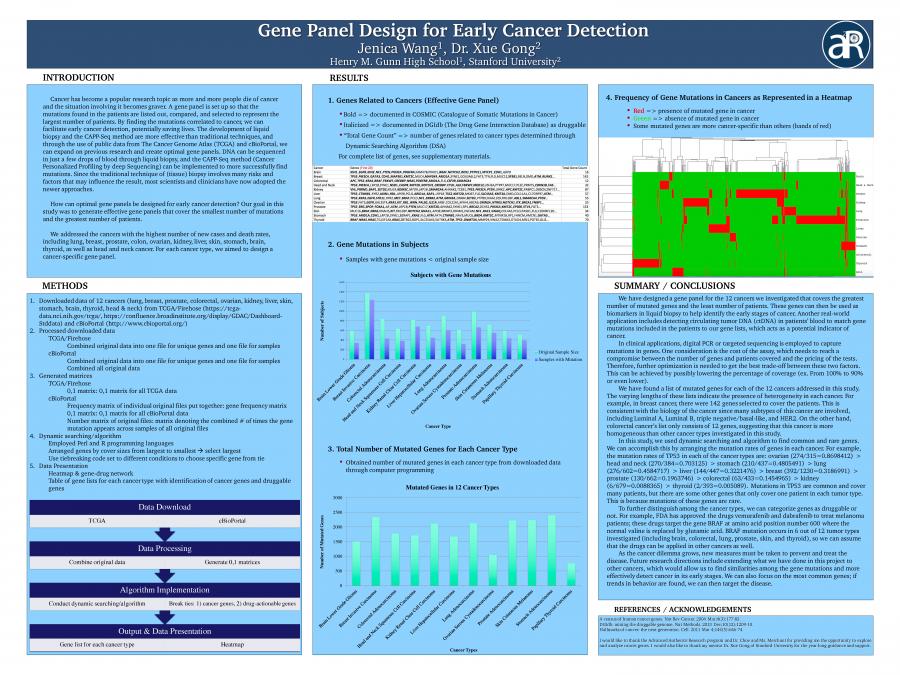Gene Panel Design for Early Cancer Detection by Jenica W.
Presentation
Summary
How can optimal gene panels be designed for early cancer detection? Cancer has become a popular research topic as more and more people die of cancer and the situation involving it becomes graver. In this study, we will generate effective gene panels that cover the smallest number of mutations and the greatest number of patients. A gene panel is set up so that the mutations found in the patients are listed out, compared, and selected to represent the largest number of patients. By finding the mutations correlated to cancer, we can facilitate early cancer detection, potentially saving lives. The development of liquid biopsy and the CAPP-Seq method are more effective than traditional techniques, and through the use of public data from TCGA, we can expand on previous research and create optimal gene panels. Eventually, these gene panels will be included in a public database...We aim to design gene panels for multiple cancer types by taking advantage of the public data available in The Cancer Genome Atlas (TCGA) consortium, which has already sequenced more than 30 types of cancer with more than 500 patients for each. In our research, we will address the cancers with the highest number of new cases and death rates, including lung, breast, prostate, colon, ovarian, kidney, liver, skin, stomach, brain, thyroid, as well as head and neck cancer.[6] For each cancer type, we aim to design a cancer-specific gene panel; also, we will integrate different cancer types and generate a common gene panel for researchers and clinicians to use...

